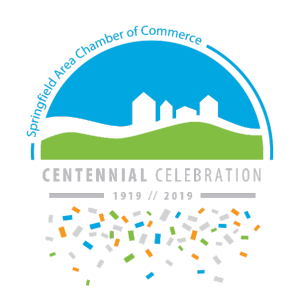Looking Back – 25 Years of Community Leadership Visits
By Jeremy Elwood
Note: This article originally appeared in the post-trip report following the Chamber's 2018 Community Leadership Visit to Chattanooga, Tennessee. Click here to view the entire report.
From Washington to Wisconsin, from Colorado to the Carolinas, the Chamber’s Community Leadership Visit has crossed the country learning best practices of our peer cities.
The scope of the trip has changed over the past two-plus decades—growing from a small handful in the beginning to nearly 80 of Springfield’s movers and shakers in recent years.
But the core focus has always remained the same. Bring together Springfield leaders from all sectors of the community to connect with each other, look at what others are doing well and where they have struggled, find out how we can improve ourselves and reaffirm what we are doing well.
“Some organizations only react to change. The Springfield Area Chamber of Commerce creates change,” said former Chamber President Jim Anderson, who participated in the trip for two decades. “The Community Leadership Visits, now spanning 25 years, have been the catalysts for several of the most positive and significant changes for our region.”
Learning from others
One of the most amazing aspects of these visits is that many of the same themes continue to appear over and over, regardless of the setting. Here, in no particular order, are some of the biggest:
- Cooperation and partnerships are key to success – Nearly every city we have visited has pointed to the importance of collaboration in every facet of society: between the public and private sectors, with the not-for-profit and philanthropic community, between business and education. Success is nearly impossible without working together.
- Successful development goes beyond the city limits – Many cities, including Boise, Spokane, Charlotte and Little Rock, have drawn significant success from the fact that they aren’t limited by their city limits. Success of the region lifts everyone – a lesson Springfield has learned as well.
- Embrace the outdoors – Several of the cities we’ve visited, including Boise, have made a concerted effort to capitalize on their natural beauty and use it to enhance quality of life, both for residents and for visitors.
- Find yourself – Whether it’s the outdoors enthusiasm of cities like Boise and Colorado Springs, or the ability of cities like Huntsville to become “Rocket City” and Greenville to “find their waterfall,” thriving cities have found a way to develop a unique, positive identity. And everyone in their city shares the message.
- Start in the center – A strong building has a strong core, and so does a strong city. Over and over again, the cities we visit have stressed the importance of revitalizing the city center as a catalyst for the rest of the region.
- Retain, attract and develop talent The Chamber added workforce development as a strategic area of focus a few years ago, to reflect a reality that we – and many other successful cities – have been working on for years. Focusing on quality of life and initiatives that will encourage employees to relocate and young professional to stay is crucial.
- Start young – On a related note, developing those talented young professionals is also a key to success. Many of the cities we have visited have emphasized the importance of support and investment, both public and private, for education and workforce development.
- Encourage entrepreneurs – Attracting large employers to your city is obviously important. But the vast majority of the economy is small businesses, meaning it’s just as important to develop an environment where start-ups and young businesses can grow and thrive.
- Giving back – Loving your city means giving back to it. The successful cities we have visited show a strong philanthropic spirit, supporting a wide range of community initiatives from education to the arts to the environment.
- Look to the skies – Several cities, including Colorado Springs, Des Moines and Boise, noted the importance of their airport to business development. It’s a lesson Springfield learned as well, with the development of its own new terminal and renaming of its airport.
- Be bold in leadership – Perhaps it’s our nature as residents of the Show- Me State, but we tend to proceed cautiously in decision-making. But many of these locales have shown a willingness to take calculated risks ... to make a decision and then boldly forge ahead.
Bringing it home
The initiatives, programs and developments that have helped move the Springfield region forward in the last 25-plus years required a lot of heavy lifting by stakeholders from all sectors of the community.
The Community Leadership Visit program has been the spark for many of these programs, encouraged the continued growth of others, and helped reshape still others.
Here, again in no particular order, are some of the major area initiatives that have been created or impacted by ideas collected from a CLV trip:
- The Springfield Regional Economic Partnership, originally created as the Ozarks Regional Economic Partnership, was created as a direct result of feedback collected from the 1997 trip to Boise – and reinforced by subsequent trips to Spokane, Charlotte, Little Rock and others.
- Ideas for how to develop and best utilize Jordan Valley Park were sparked by several early CLV trips, most notably the 2000 trip to Spokane.
- The early development of the Wonders of Wildlife Museum was inspired by the 1998 trip to Chattanooga, among others.
- The decision to rename the Springfield-Branson National Airport was inspired by our 2005 trip to Des Moines, while the decision to build the new Midfield Terminal grew from the 1999 trip to Colorado Springs.
- Downtown redevelopment has always been a key theme, but the Jordan Valley Innovation Center in particular was inspired by similar projects in numerous other cities.
- Young professionals play a key role in shaping our future; while The Network for Young Professionals is a locally grown program, several visits – including the 2008 trip to Madison – offered best practices to shape the group.
- The Facing Racism program, initially established at the Chamber and now housed at Missouri State,
was a direct response to efforts by officials in Grand Rapids to address diversity and inclusion. - The Community Focus Report was inspired by Lexington’s efforts to be more self-reflective and tackle their own hard-hitting issues.
- Multiple community-wide visioning processes have been shaped by community visits, including the Vision 20/20 process, Field Guide 2030 and the current Community Visioning Committee.
- The Chamber’s continued efforts to advocate for enhanced state-level workforce development programs grew directly from the success of the Alabama Industrial Development Training program discussed in Huntsville.
Moving ahead
So where do we go from here?
No matter the 2019 trip destination or who attends, one thing is certain: community leaders understand the value of taking time from their busy schedules to learn from their peers.
And they also understand the importance of working together – collaboration between the public and private sector, and the dialogues and conversations that occur organically between the participants, are some of the most valuable takeaways.
“When you look back at what we have learned in 25 years, the body of knowledge we’ve accumulated is incredible,” says Chamber President Matt Morrow. “That only happens because we’re willing to step back and take a look at ourselves. That’s not always easy to do, but I’m grateful to live in a community where our leaders want to strive to be better every day.”
Major Initiatives Impacted by Community Leadership Visits
- Springfield Regional Economic Partnership
- Jordan Valley Park
- Wonders of Wildlife Museum
- The new airport terminal
- Renaming of Springfield-Branson National Airport
- Jordan Valley Innovation Center
- The Network for Young Professionals
- The Facing Racism program
- The Community Focus Report
- Community-wide visioning initiatives
- State-level workforce development programs

This article is part of the Chamber's special Centennial publication. Click here to return to the main page.
